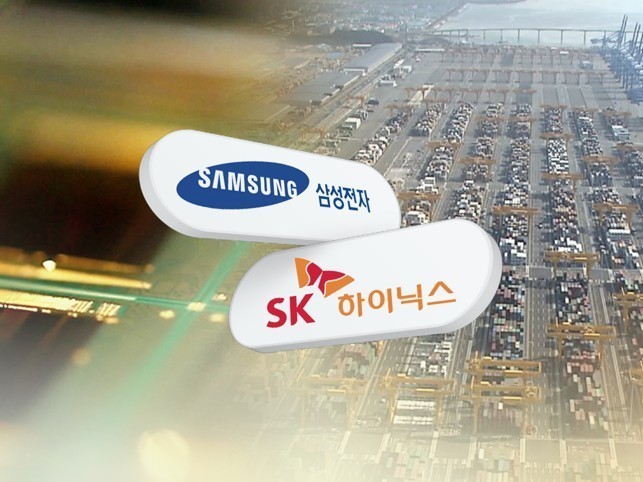DRAM prices on downward trend, boding ill for Korean chipmakers
By YonhapPublished : June 17, 2020 - 10:01

Spot market prices for DRAM chips are on a downward trend after reaching their peak in April, industry data showed Wednesday, boding ill for South Korean chipmakers.
The spot price of 8-gigabit DDR4 DRAM, a benchmark price for the category, reached $2.90 as of Wednesday, which was down 19.4 percent from the April 7 peak of $3.60, according to data from market tracker DRAMeXchange.
On June 9, the spot price of 8-gigabit DDR4 DRAM fell below $3 for the first time since Dec. 13, according to DRAMeXchange.
The spot price of 8-gigabit DDR4 DRAM rose from late last year and took a boost as the novel coronavirus triggered non-face-to-face activities and pushed server companies to buy more chips.
However, the price started to decline from April as the COVID-19 pandemic began to severely impact demand for smartphones and other electronic gadgets in major markets like the United States and Europe.
According to market researcher Counterpoint Research, global smartphone shipments were 69.37 million units in April, down 41 percent from a year earlier.
The drop in chip prices may hurt South Korean chipmakers. Samsung Electronics Co. and SK hynix Inc. held a combined 73.4 percent market share in the first quarter, DRAMeXchange data showed.
A spot price is the price quoted in the market, while contract prices are negotiated as monthly or quarterly deals. Changes in spot prices usually affect contract prices. Generally, 90 percent of DRAM chips are traded on contract quotes.
DRAMeXchange expected that if the downward trend in DRAM spot prices continues, it could also led to a fall in contract quotes in the third quarter.
Already, major chipmakers around the globe have predicted that their sales performance may not be impressive during the current quarter.
According to market researcher IC Insights, 14 of 21 semiconductor firms that issued quarterly guidance expected their sales in the second quarter to decline.
But some analysts said that a price drop in DRAM chips may be slower than expected in the third quarter as firms maintain stable inventory levels, while the US and Europe started to reopen their economies recently.
"As retail channels in North America and Europe started to reopen and increased sales of electronic products, DRAM inventory level is declining," Kim Dong-won, an analyst at KB Securities, said. "Unlike market researchers' predictions, the average selling price of DRAM and NAND flash in the third quarter is expected to stay flat from the previous quarter." (Yonhap)









![[Kim Seong-kon] Democracy and the future of South Korea](http://res.heraldm.com/phpwas/restmb_idxmake.php?idx=644&simg=/content/image/2024/04/16/20240416050802_0.jpg&u=)








![[KH Explains] Hyundai's full hybrid edge to pay off amid slow transition to pure EVs](http://res.heraldm.com/phpwas/restmb_idxmake.php?idx=652&simg=/content/image/2024/04/18/20240418050645_0.jpg&u=20240418181020)

![[Today’s K-pop] Zico drops snippet of collaboration with Jennie](http://res.heraldm.com/phpwas/restmb_idxmake.php?idx=642&simg=/content/image/2024/04/18/20240418050702_0.jpg&u=)